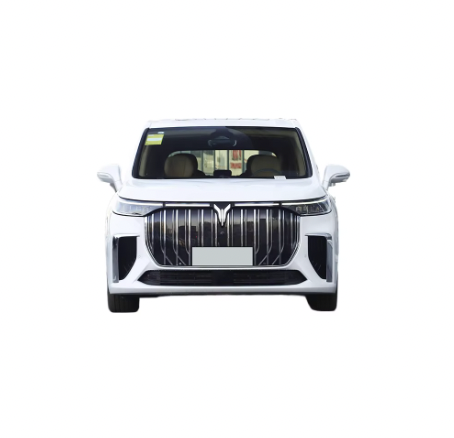China's transformation from an automobile importer to a global automotive powerhouse represents one of the most significant shifts in international trade dynamics of the 21st century. The meteoric rise of China automobile export has fundamentally altered traditional supply chains and challenged established automotive markets worldwide. This remarkable evolution has been driven by strategic government policies, massive infrastructure investments, and rapid technological advancement in electric vehicle manufacturing capabilities.

The geographic concentration of automotive manufacturing in specialized export zones has created unprecedented economies of scale and operational efficiency. These industrial clusters have become magnets for global investment and technological transfer, positioning China as the world's largest vehicle exporter by volume. The ripple effects of this transformation extend far beyond manufacturing statistics, reshaping international trade agreements, logistics networks, and competitive strategies across multiple continents.
Understanding the mechanics behind China's automotive export success reveals important insights about modern industrial policy and global supply chain management. The integration of advanced manufacturing technologies, strategic resource allocation, and market-oriented reforms has created a formidable competitive advantage that continues to expand China's presence in international automotive markets.
Strategic Development of China's Automotive Export Infrastructure
Geographic Concentration and Industrial Clustering
The emergence of specialized automotive export bases across China's coastal provinces has created powerful industrial ecosystems that leverage proximity advantages and shared infrastructure. These concentrated manufacturing hubs, particularly in Guangdong, Jiangsu, and Shanghai, have developed sophisticated supplier networks that reduce production costs and improve quality control throughout the entire manufacturing process.
Each export base has developed unique specializations that complement broader national automotive strategy. The Pearl River Delta focuses on electric vehicle components and battery technology, while the Yangtze River Delta emphasizes precision manufacturing and luxury vehicle assembly. This geographic specialization has enabled China automobile export operations to achieve remarkable efficiency gains and technological advancement rates.
The clustering effect has attracted international automotive companies to establish research and development facilities within these zones, creating knowledge transfer opportunities that benefit both foreign investors and domestic manufacturers. This collaborative environment has accelerated innovation cycles and enhanced the global competitiveness of Chinese automotive products across multiple market segments.
Infrastructure Investment and Logistics Optimization
Massive infrastructure investments in port facilities, transportation networks, and storage capabilities have dramatically reduced the costs and complexity of international vehicle shipments. Purpose-built automotive terminals equipped with specialized loading equipment and climate-controlled storage facilities ensure that vehicles maintain optimal condition during export processes.
The development of integrated logistics platforms connecting manufacturing facilities directly to export terminals has streamlined the entire supply chain from production floor to international markets. These sophisticated systems incorporate real-time tracking, inventory management, and quality assurance protocols that meet the stringent requirements of global automotive markets.
Strategic partnerships with international shipping companies have established dedicated vessel routes and consolidated cargo services that reduce transportation costs while improving delivery reliability. This logistics infrastructure has become a critical competitive advantage that supports the continued expansion of China automobile export volumes to emerging and established markets worldwide.
Technological Innovation Driving Export Competitiveness
Electric Vehicle Technology Leadership
China's early and sustained investment in electric vehicle technology has positioned the country at the forefront of the global automotive industry's transition toward sustainable transportation solutions. The integration of advanced battery technologies, smart manufacturing processes, and digital connectivity features has created products that compete effectively in premium international markets.
Research and development spending in electric vehicle technologies has exceeded traditional automotive markets, resulting in breakthrough innovations in battery chemistry, motor efficiency, and autonomous driving capabilities. These technological advantages have enabled Chinese manufacturers to enter previously inaccessible market segments and compete directly with established luxury automotive brands.
The rapid scaling of electric vehicle production capabilities has created cost advantages that traditional manufacturers struggle to match. This combination of technological sophistication and manufacturing efficiency has become a defining characteristic of China automobile export success in electric vehicle categories.
Digital Manufacturing and Industry 4.0 Integration
The adoption of advanced manufacturing technologies, including artificial intelligence, robotics, and predictive analytics, has transformed Chinese automotive production facilities into highly efficient and flexible manufacturing systems. These digital capabilities enable rapid product customization and quality optimization that meets diverse international market requirements.
Smart manufacturing platforms integrate design, production, and quality control processes in ways that reduce waste, improve consistency, and accelerate time-to-market for new vehicle models. This operational excellence has become essential for maintaining competitive pricing while meeting increasingly sophisticated consumer demands in global markets.
The implementation of comprehensive data analytics throughout the manufacturing process enables continuous improvement and proactive problem resolution that enhances overall product reliability and customer satisfaction. These technological capabilities represent significant competitive advantages that support sustained growth in international automotive markets.
Market Penetration Strategies and Global Expansion
Emerging Market Focus and Localization Approaches
Chinese automotive manufacturers have successfully penetrated emerging markets by developing products specifically designed to meet local consumer preferences, regulatory requirements, and economic conditions. This market-focused approach contrasts with traditional export strategies that simply adapt existing products for international sales.
The establishment of local assembly facilities and service networks in key export markets has enhanced customer confidence while reducing import duties and transportation costs. These investments demonstrate long-term commitment to market development and create sustainable competitive advantages that are difficult for competitors to replicate.
Strategic partnerships with local distributors and financial institutions have facilitated market entry by providing essential market knowledge and customer relationship capabilities. These collaborative approaches have accelerated market penetration while reducing the risks associated with international expansion in unfamiliar markets.
Brand Development and Quality Positioning
The evolution from original equipment manufacturing to independent brand development has transformed the perception of Chinese automotive products in international markets. Sustained investment in design capabilities, quality systems, and brand marketing has elevated Chinese vehicles from cost-focused alternatives to competitive products that offer attractive value propositions.
Participation in international automotive exhibitions and racing competitions has enhanced brand visibility and demonstrated product capabilities to global audiences. These marketing investments have been essential for overcoming initial skepticism about Chinese automotive quality and establishing credibility in competitive international markets.
The development of comprehensive warranty programs and international service networks has addressed consumer concerns about after-sales support and product reliability. These customer-focused initiatives have become critical success factors for sustained growth in China automobile export markets worldwide.
Economic Impact and Trade Pattern Transformation
Global Supply Chain Restructuring
The emergence of China as a major automotive exporter has necessitated significant restructuring of global automotive supply chains and manufacturing strategies. Traditional automotive producing countries have been forced to reassess their competitive positions and develop new strategies for maintaining market share in an increasingly competitive environment.
The integration of Chinese suppliers into global automotive supply chains has created new dependencies and opportunities that reshape international trade relationships. These evolving supply chain configurations reflect the changing dynamics of global automotive manufacturing and the increasing importance of cost competitiveness in international markets.
The geographic redistribution of automotive manufacturing capacity has implications for employment, industrial policy, and economic development strategies in both traditional automotive producing countries and emerging markets. Understanding these shifts is essential for developing effective responses to changing competitive conditions.
Trade Balance and Currency Effects
The substantial growth in China automobile export volumes has contributed to significant trade balance improvements and increased foreign currency earnings that support broader economic development objectives. These economic benefits demonstrate the strategic value of developing internationally competitive automotive manufacturing capabilities.
The automotive sector's contribution to export earnings has become increasingly important for China's economic growth strategy and international financial position. This economic impact extends beyond direct manufacturing employment to include supporting industries, logistics services, and financial sector activities.
Exchange rate fluctuations and trade policy developments continue to influence the competitiveness of Chinese automotive exports in international markets. Managing these external factors requires sophisticated financial management and strategic planning capabilities that have become integral to successful export operations.
Challenges and Future Development Prospects
Regulatory Compliance and Quality Standards
Meeting diverse international safety, environmental, and quality standards represents an ongoing challenge for Chinese automotive exporters seeking to expand their global market presence. The complexity and variation of regulatory requirements across different markets require substantial investment in compliance capabilities and quality management systems.
The development of comprehensive testing and certification capabilities has become essential for maintaining access to premium international markets with stringent quality requirements. These investments in quality infrastructure represent significant costs that must be balanced against competitive pricing strategies.
Ongoing regulatory changes, particularly related to environmental standards and autonomous vehicle technologies, require continuous adaptation and investment in new compliance capabilities. Successfully managing these regulatory challenges is critical for sustained success in international automotive markets.
Technological Competition and Innovation Sustainability
Maintaining technological leadership in rapidly evolving automotive markets requires sustained investment in research and development capabilities that can anticipate and respond to changing consumer preferences and regulatory requirements. The pace of technological change in electric vehicles and autonomous driving systems presents both opportunities and challenges for Chinese manufacturers.
Competition from established automotive manufacturers investing heavily in electric vehicle technologies and new entrants from technology sectors creates pressure to maintain innovation leadership while managing development costs. This competitive environment requires strategic focus and efficient resource allocation to maintain market position.
The development of intellectual property portfolios and protection strategies has become increasingly important as Chinese automotive companies expand their international presence and compete in markets with strong intellectual property enforcement. Building these capabilities is essential for long-term competitive sustainability.
FAQ
What factors have contributed most significantly to the growth of China automobile export volumes
The growth of China automobile export has been driven primarily by strategic government investment in automotive infrastructure, technological advancement in electric vehicle manufacturing, and the development of specialized export bases with integrated logistics capabilities. These factors have combined to create cost advantages and production capabilities that enable competitive pricing in international markets while maintaining product quality standards.
How has China's focus on electric vehicles impacted its global automotive competitiveness
China's early and sustained investment in electric vehicle technology has positioned the country as a global leader in this rapidly growing market segment. The development of advanced battery technologies, manufacturing scale advantages, and integrated supply chains has enabled Chinese manufacturers to offer competitive electric vehicles that meet international quality standards while providing attractive pricing compared to traditional automotive manufacturers.
What challenges do Chinese automotive exporters face in established international markets
Chinese automotive exporters face significant challenges related to brand recognition, regulatory compliance, and establishing comprehensive after-sales service networks in established international markets. Meeting diverse safety and environmental standards, building consumer confidence in product quality, and competing with established brands requires substantial investment in market development and quality assurance capabilities.
How sustainable is China's current automotive export growth trajectory
The sustainability of China automobile export growth depends on continued technological innovation, successful brand development, and effective management of increasing international competition. While current advantages in electric vehicle technology and manufacturing efficiency provide strong competitive positions, maintaining market leadership requires ongoing investment in research and development, quality improvement, and market-specific adaptation capabilities.
Table of Contents
- Strategic Development of China's Automotive Export Infrastructure
- Technological Innovation Driving Export Competitiveness
- Market Penetration Strategies and Global Expansion
- Economic Impact and Trade Pattern Transformation
- Challenges and Future Development Prospects
-
FAQ
- What factors have contributed most significantly to the growth of China automobile export volumes
- How has China's focus on electric vehicles impacted its global automotive competitiveness
- What challenges do Chinese automotive exporters face in established international markets
- How sustainable is China's current automotive export growth trajectory

